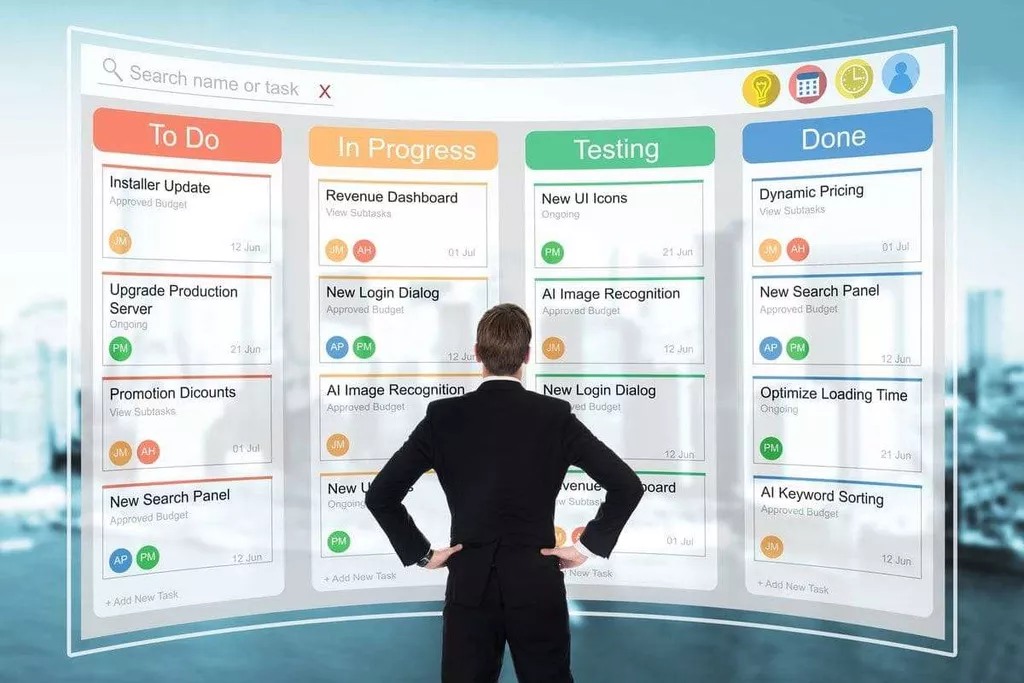To test your websites and applications in real-user conditions, you can harness LambdaTest real device cloud. Startups and major businesses are looking for tools and approaches to help them accelerate their development and testing workflows. Regarding on-premise testing, you’d probably agree that complicated, scalable infrastructure setup and maintenance costs can significantly raise your burn rate.
Then, we calculate the risk exposure of the items, and based on that; we prioritize each test case. Test Execution allows software teams to move on to the next development phase and ensures that your projects function quickly and successfully. It is also responsible for ensuring the application’s competency in the global market. When the expected Test Execution results match the actual results, the software is ready to go live in the market. Test Execution allows software teams to reach the next level of development and ensures your projects run efficiently and smoothly. It’s also responsible for ensuring the application’s competency in the global market.
Test Execution Schedule: Maximizing Efficiency in Software Testing
It is a technique that depends on the organizations and testers completely. However, the representation should be done in a table like the one given below. Once the test script is ready, it is shared with the development and business analyst team for review. After getting the test cases ready, we need to have the application prepared to initiate the Test Execution process.
- Now, in addition to the manual executions, automation teams should also be able to run their tests on specific intervals, which are known as jobs, and we can quickly achieve via Schedule jobs in TestProject UI.
- To run an entire test-suite, TestProject offers the feature to create a job, which we can schedule for execution.
- Test Execution refers to the execution of test cases of software applications to ensure they meet the pre-defined requirements and specifications.
- LambdaTest’s Test At Scale is a platform for test intelligence and observability that reduces testing time and gives faster feedback.
- In order to exercise effective control over the quality of the software, and of the testing, it is advisable to have criteria which define when a given test activity should start and when the activity is complete.
- You should ensure that your test environment is stable, secure, and compatible with the software under test, and that it mimics the real-world conditions as closely as possible.
In addition, bug reporting and retesting are carried out during this process. Test Execution involves verifying the functionality of each feature in the software application, which is placed in different scenarios to validate its response in those situations. It plays a crucial role in the testing process to help teams create robust software applications that meet the end-user requirements. In the test execution process, the tester will usually write or execute a certain number of test cases, and test scripts or do automated testing. If it creates any errors then it will be informed to the respective development team to correct the issues in the code.
2.6 Test Estimation Techniques
The type and amount of information that should be included for a technical audience or a test team may be different from what would be included in an executive summary report. In the first case, detailed information on defect types and trends may be important. In the latter case, a high-level report (e.g., a status summary of defects by priority, budget, schedule, and test conditions passed/failed/not tested) may be more appropriate. The test manager is tasked with overall responsibility for the test process and successful leadership of the test activities. The test management role might be performed by a professional test manager, or by a project manager, a development manager, or a quality assurance manager.
Sometimes testers use branch coverage instead of code coverage which is completely a personal choice to use. If priority is done based on how many lines are covered, sometimes, you may miss critical branch test cases that should have been at the top spot. A problem in risk-based prioritization is defining the risks of the system and correlating them with test cases to assign priority. Prioritization has been a method adopted deep into each domain of computers and the science behind it. A similar thing can be adopted in the test execution technique to divide test cases according to priority and find defects in high-priority cases first. Such tweaks in the test execution phases enhance the analysis part and our observations angles and provide more profound meaning to test execution results, processes, and reports.
Online Browser Testing
The test execution schedule should take into account such factors as prioritization, dependencies, confirmation tests, regression tests, and the most efficient sequence for executing the tests. An appropriate test strategy is often created by combining several of these types of test strategies. For example, risk-based testing (an analytical strategy) can be combined with exploratory testing (a reactive strategy); they complement each other and may achieve more effective testing when used together. The activities and tasks performed by these two roles depend on the project and product context, the skills of the people in the roles, and the organization. Test execution refers to executing test cases to ensure software applications meet predefined requirements and specifications. The second approach talks about listing the risks by referring to the requirements satisfied by the software.

You can develop your classifications and models based on the type of project you are dealing with. However, considering a general consensus, an organization may pick one of the following test execution priorities. In recent years, test execution techniques have been overshadowed by things initially considered more valuable, such as applied methods and tools used in the process. We started with manual testing, but when things started to become repetitive, we turned towards automation testing and worked ahead writing scripts.
How to view the Report of Schedule Jobs IN TestProject?
When it comes to software testing, many factors need to be considered when deciding on Test Execution priorities. To successfully choose the right tests and prioritize them effectively, we need to know what they are and how they affect the testing process. As testing software is a complex process, Test Execution helps development team ensure efficiency, reliability, and compliance with industry standards. It is the final step in the testing process and is usually performed after the test cases have been created and reviewed. Proactive, high-performing DevOps teams with multiple simultaneous CI cycles may require more generous usage limits than the waterfall teams supporting legacy tech.

Generally, people use tools such as Jenkins for scheduling of jobs/tasks, which TestProject does integrate. However, TestProject provides a similar feature out of the box as well, for those that might be unfamiliar with Jenkins. It can be acceptable to end testing under such circumstances, if the project stakeholders and business owners have reviewed and accepted the risk to go live without further testing. A test plan outlines test activities for development and maintenance projects. A fourth way to cope with test execution constraints is to communicate with stakeholders, such as developers, project managers, and clients, throughout the test execution process. You should report the status, progress, and results of your test execution, and highlight any issues, risks, or changes that affect your testing.
ISTQB Foundation Level Syllabus, Chapter 3 of 6: Static Testing
A new result parameter that a tester and organization can introduce to point out that execution did not happen due to some cases. Otherwise, first, we would check why a test case failed and then notice that the execution was abandoned due to some reasons. In this section, we explore different types of test execution techniques. The Test Execution phase is a critical part of the Software Testing Lifecycle.
Since one of the objectives of testing is to find defects, defects found during testing should be logged. In addition, testing may identify new risks, help to determine what risks should be mitigated, and lower uncertainty about risks. Many organizations are able to successfully achieve the benefits of test independence while avoiding the drawbacks. To add a test, you will need to drag the tests from the project and drop it into the job. You can see the option for the same in the above image marked with the rectangle.
Activities of Test Execution
It involves product risk analysis, which includes the identification of product risks and the assessment of each risk’s likelihood and impact. The resulting product risk information is used to guide test planning, the specification, preparation and execution of test cases, and test monitoring and control. The way in which the test manager role is carried out varies depending on the software development lifecycle. In order to exercise effective control over the quality of the software, and of the testing, it is advisable to have criteria which define when a given test activity should start and when the activity is complete.
Automation Testing Advisor
You should also seek feedback, clarification, and support from your stakeholders, and align your testing goals and expectations with them. By communicating with stakeholders, you can ensure transparency, collaboration, and accountability in your test execution process, and avoid misunderstandings or conflicts. The first phase is the most critical as the testing quality depends on it. If you are thinking about a defect and quickly writing the script, this method strictly prohibits this process.
When the Test Execution intended result is the same as the actual results, the software is ready to go live in the market. What are the most common types of software testing to consider when developing your testing strategy? Defects found during static testing, particularly reviews, will normally be documented in a different way, e.g., in review meeting notes. Once you define a scheduled test list and enable the email message, all selected settings persist in that dialog next time you schedule a job within the same project. Before we move on to the actual classification, we need to set the priorities. Similar to other sections, here, too, everything depends on testers, organization, and the project.